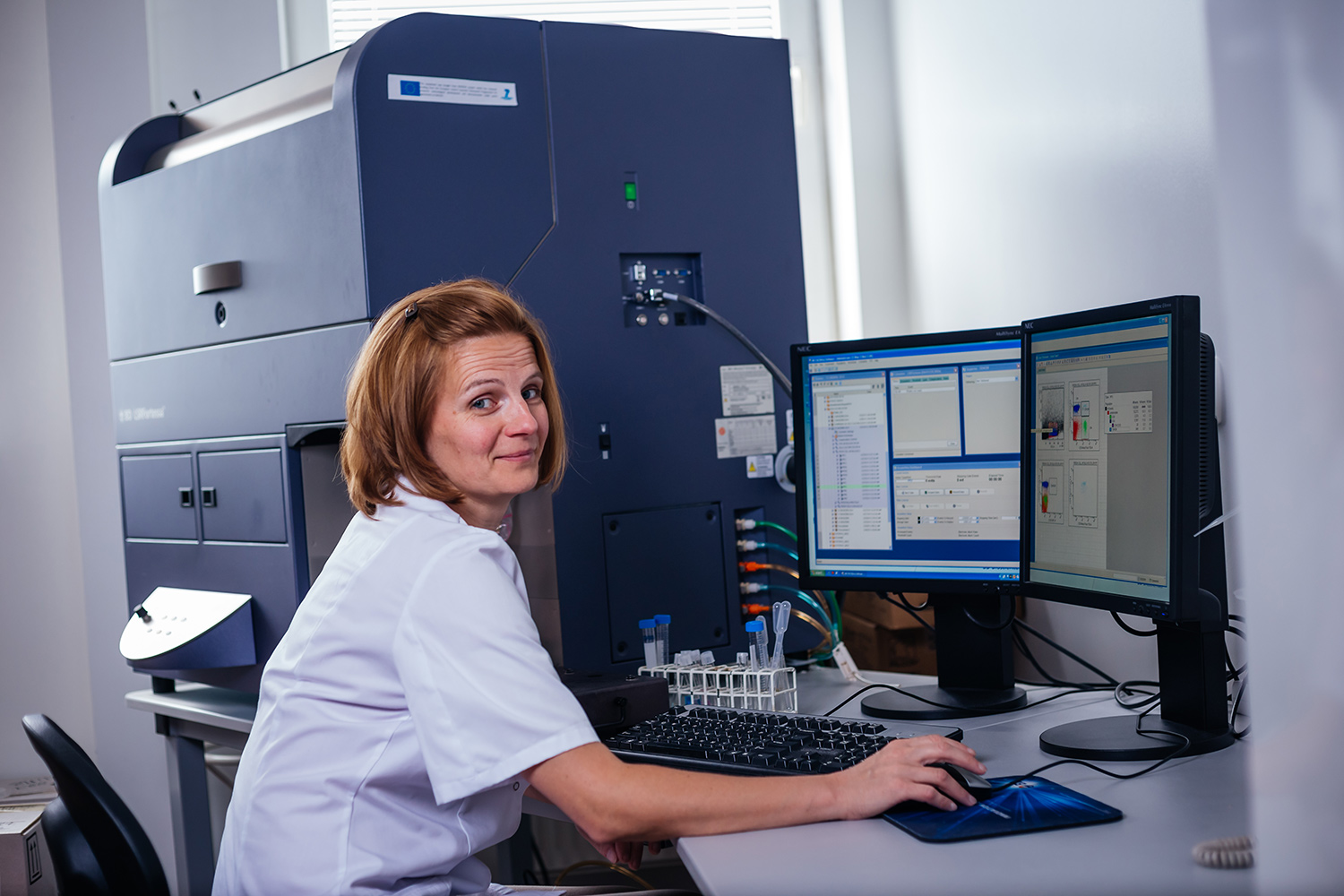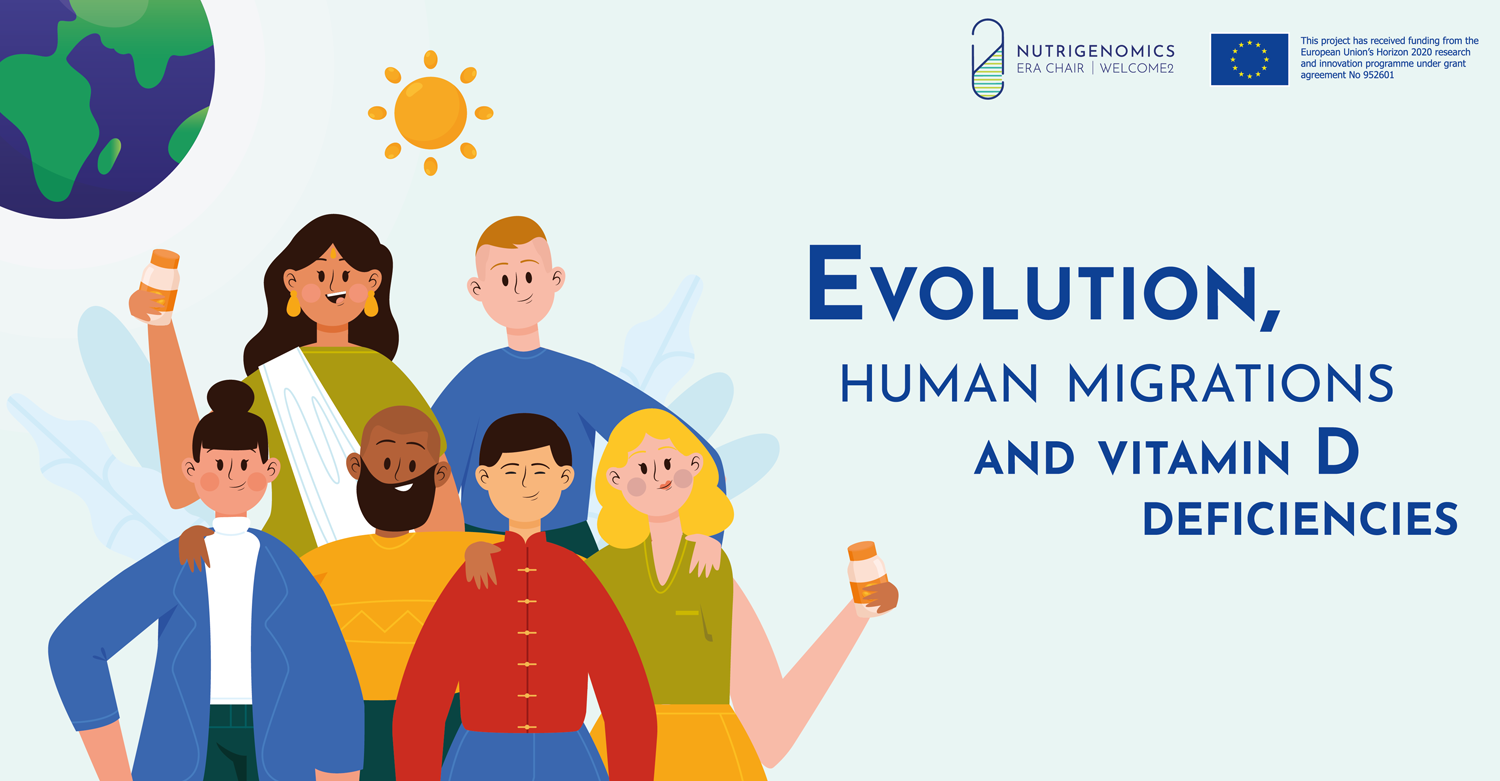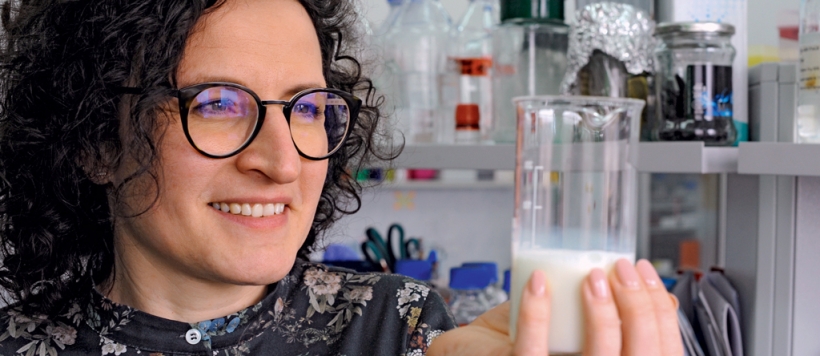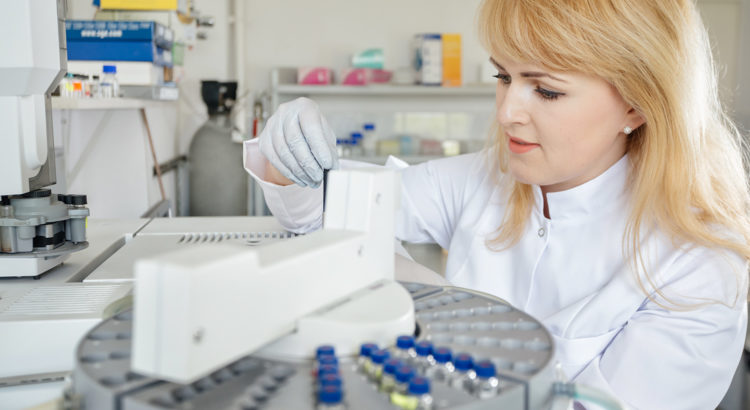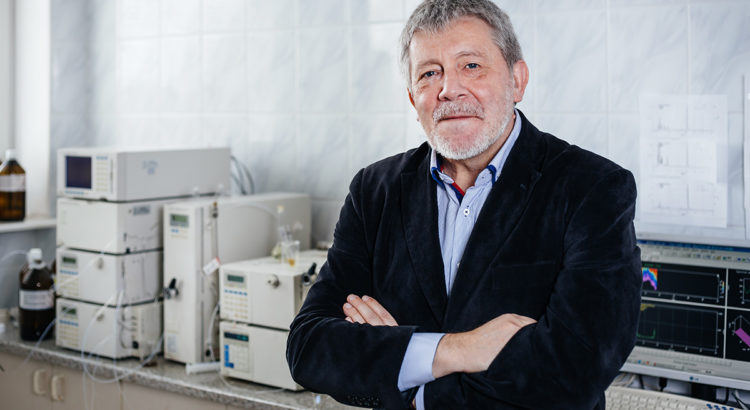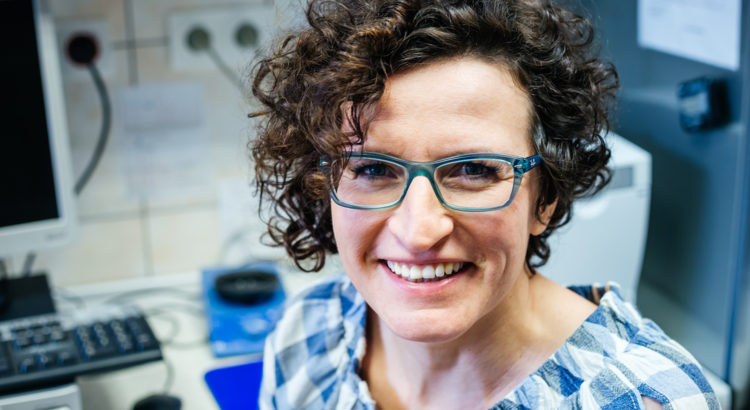Our daily diet contains carbohydrates, lipids, proteins, minerals, and vitamins – nutrients that provide us with energy and serve as the building blocks of our bodies. However, we are increasingly learning that what we eat also interacts with the genes in our cells in important ways.
Diet is the most dominant of the environmental factors affecting us from conception to death. Every day, more than 1 kg of food passes through our bodies, the largest amount of all substances we come into close contact with. Dietary signals are in direct contact with the genome: every day, our breakfast, lunch, and dinner “talk” to our genes. For more than 20 years, we have known the sequence of all 20,000 human genes that carry the information needed to build proteins. We also know that in addition to them, there are at least as many non-coding RNAs within our genome, which do not produce any proteins. This understanding has brought us into the postgenomic era, where research has been initiated in numerous new fields. These include nutrigenomics, which can be defined as the study of how the food we eat (“nutri”) interacts with all of our genes (“genomics”).
The same yet different
Nearly 99% of the genome differs very little among all 8 billion humans on Earth. However, we do differ from one another in terms of such obvious traits as height, weight, hair, and skin and eye color, as well as such characteristics as the likelihood of developing a specific disease. Some of these traits, such as eye color, are obviously determined by genes. However, the risk of developing type 2 diabetes, for example, is only up to 10% determined by the genes we inherit from our parents and up to 90% determined by environmental factors and our lifestyle.
Our body is made up of 3×1013 cells, which come in at least 400 different variants. They form the tissues of the brain, the immune system, the liver, and all other organs in the body. In every human, each cell contains the same genome, which means the same information necessary to build proteins. In different types of cells, however, the genome is organized by proteins into tightly packed chromatin (called heterochromatin) and lightly packed chromatin (euchromatin) in such a way that access is only possible to those genes that carry information about the proteins needed in specific tissues. This packing of the genome, which does not affect its DNA sequence (it does not cause any mutations), is referred to as the “epigenome” (“epi-” meaning “above”).
Some aspects of the epigenome become fixed already in the first weeks of gestation, referred to as early embryogenesis. In this very sensitive period of life, important decisions are made about the development of organs, which should remain unchanged for the rest of the organism’s life. It is this stable part of the epigenome that ensures that our brain cells remain brain cells throughout our lives, instead of “changing their minds” and suddenly transforming, for example, into kidney cells that produce urine. The integrity of the human body is based on the stability of this aspect of the epigenome.
But the epigenome has also certain dynamic aspects: signals from the inside and outside of cells affect the ability of specialized proteins in the nucleus to recognize certain regions of the genome. Certain signals, for example those from food components, can alter how the genome is packaged into euchromatin and heterochromatin. Genes located in euchromatin can be recognized by transcription factors and RNA polymerases. This means that a specific cell uses only those of the 20,000 genes that it can access through the chromatin structure. This means an average of 10,000 genes that get copied out into RNA (in a process called transcription), which is used by a particular cell as a “template” to synthesize proteins. Changes in the epigenome can affect the transcriptome, or the total number of RNA molecules in our cells. Many of the signals that affect the epigenome and the transcriptome come from diet. Therefore, a central aspect of nutrigenomic research involves describing and understanding how nutrients affect the epigenome and the transcriptome of cells, and by the same token their functions. This aspect of nutrigenomics is often referred to as nutritional epigenomics.
Every day, the dietary choices we make impact on the epigenome and the transcriptome in our tissues and cell types. A disease like type 2 diabetes takes years or even decades to develop, but it results above all from daily diet and lifestyle choices. In a similar way, other elements of what is called the metabolic syndrome, such as high blood pressure, abdominal obesity (measured by waist circumference), high levels of fat (triglycerides), and low levels of HDL (high-density lipoprotein, also referred to as the “good” cholesterol) in the blood, depend on the decisions we make – what we eat and how much we exercise.
Benefits of vitamin D3
The compounds that can “talk” to the epigenome include vitamin D3. In fact, this is a nutrient we are able to produce within our bodies, through skin exposure to UVB radiation from the Sun. However, predominantly indoor lifestyles, skin coverage with textiles, the use of sunscreens, as well as the insufficient intensity of sunlight in the winter months mean that many people acquire vitamin D3 deficiency. Vitamin D status is measured by the blood serum concentration of the most abundant vitamin D3 metabolite, namely 25-hydroxyvitamin D3 (abbreviated 25(OH)D3). According to the US-based Endocrine Society, vitamin D status should be at least 75 nM (ideally 100 nM), whereas concentrations of 25(OH)D3 below 50 nM are regarded as deficiency, and below 30 nM as severe deficiency. More than 1 billion people worldwide have vitamin D deficiency. To put this into perspective, the average vitamin D status in the population in Poland is estimated at 46 nM, which means that many people in the country suffer from a deficiency of this compound and require supplementation, especially in the winter months.
However, one might ask whether the threshold level for the vitamin D status is the best benchmark for calculating the demand for vitamin D in individual people. Every human is different, and the impact of vitamin D on the response of the epigenome and the transcriptome in our cells will vary. Based on our concept of the vitamin D response index, people can be divided into high, mid, and low responders to vitamin D. It is estimated that one in four people fall into the group of low responders. This therefore means that we have our own individual requirements for vitamin D3 supplementation, especially during the winter months. High responders have lower needs and are likely to manage with the generally recommended, yet low concentrations: up to 20 μg, or 800 international units (IU) per day. Low responders, on the other hand, may need up to 4,000 IU (100 μg) per day.
Vitamin D is well known for its role in controlling calcium levels in blood. It is essential for bone remodelling; a process takes place throughout our lives. Children with vitamin D deficiency can develop rickets, and adults can be affected by osteomalacia, a deformation of the bones that carries a higher risk of fractures. In addition, vitamin D is extremely important for the proper functioning of the immune system, which comprises innate and adaptive immunity. The innate immune system is the first line of defence against microbial pathogens such as bacteria and viruses. In addition, cells of the innate immune system, such as monocytes, macrophages, and neutrophils, are key mediators of inflammation. Inflammation can be divided into acute and chronic. Acute inflammation lasts up to two weeks and supports the body in the fight against pathogens. In chronic inflammation, the cause of this harmful state is not removed successfully, and adverse reactions continue for months, years, or even decades. Most of the serious diseases, such as type 2 diabetes, atherosclerosis, Alzheimer’s disease and cancer, are associated with chronic inflammation. In the short term, vitamin D supports acute inflammation, but in the long term, it counteracts chronic inflammation. This chiefly happens through the “programming” of the epigenome and the transcriptome of monocytes and macrophages. These epigenetic programming events create cellular memory, which means that cells remember what they were exposed to. In a similar way, all the cells in our bodies (not just the neurons in the brain) can remember lifestyle-related events, such as daily responses to food components, physical activity, and exposure to pathogens.
A step towards personalized medicine
Our projects are based upon the central assumption that vitamin D trains immune cells and other tissue cells so that they can better respond to various environmental factors. In the context of the Horizon 2020-funded ERA Chair WELCOME2 project, we will be conducting an intervention study. Sixty volunteers with early signs and symptoms of metabolicsyndrome will be asked to make significant lifestyle changes for a period of three months. We will ask them to increase their average daily physical activity, for example by increasing the number of steps per day to at least 10,000. We will simultaneously give all participants vitamin D until they reach a very good status of 100 nM. In addition, we plan to follow up 10 highly committed participants for a period of three years and take their blood samples every three months. We will use their immune cells (obtained from the blood samples) to characterize their epigenome and transcriptome and observe how they change together with lifestyle changes. In this way, we will collect huge amounts of molecular data from each participant. We will analyse such data using bioinformatics methods, including machine learning.
A key point of our project will involve the development of computer models called digital twins. The concept of a “digital twin” is well-known in engineering, for example in aircraft construction. It stands to reason that all aircraft components, such as engines and wings, must undergo extensive tests, both individually and in combination with other components, to ensure that the aircraft will pose no risk to the pilot and passengers. Such tests are currently carried out using digital computer models, which can simulate a much broader range of conditions than traditional wind tunnels. Digital twins of real people are a lot more complex than aircraft engines. Therefore, it is necessary to be realistic and strive to model only certain tissues and cell types. Consequently, we will create digital twins of monocytes and lymphocytes isolated from blood samples taken from specific participants. Unlike other tissues in the human body, such immune cells have one advantage: they are mobile. Monocytes and lymphocytes circulate through the body, communicating with all organs. As a consequence, immune cells respond to all changes in the body and, supported by vitamin D, train their epigenome accordingly.
Importantly, digital twins not only facilitate computational descriptions of cell functions, but also offer the ability to test such factors as stress, infections, and exposure to food components. As with aircraft engines, we can also try out various interventions in silico, which means testing multiple factors in a computer model without the need to involve study participants. This means reducing their effort and exposure to danger, and saving funds. Since each individual is different, our digital twins will be idiosyncratic in nature, too. Consequently, we expect to obtain personalized recommendations for lifestyle changes for each study participant to reduce the risk of the development or progression of the metabolic syndrome. Since some of the conclusions from the modelling of these digital twins will be general in nature, we will attempt to apply the results we will obtain in the study to the general population.
This article was originally published in ACADEMIA – The magazine of the Polish Academy of Sciences | 2022 | No 3 (75) Turning Points
Read more
